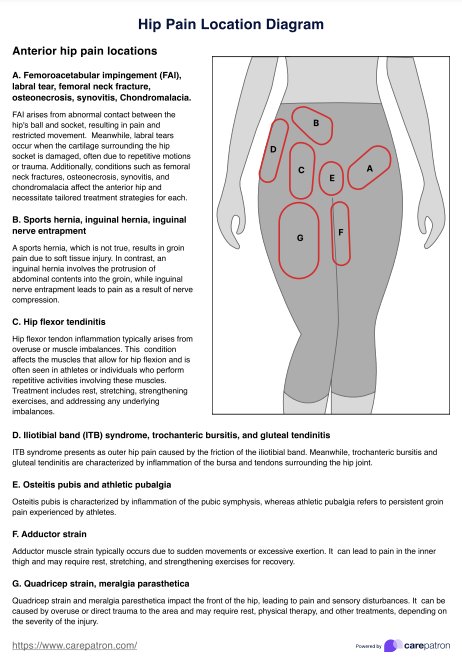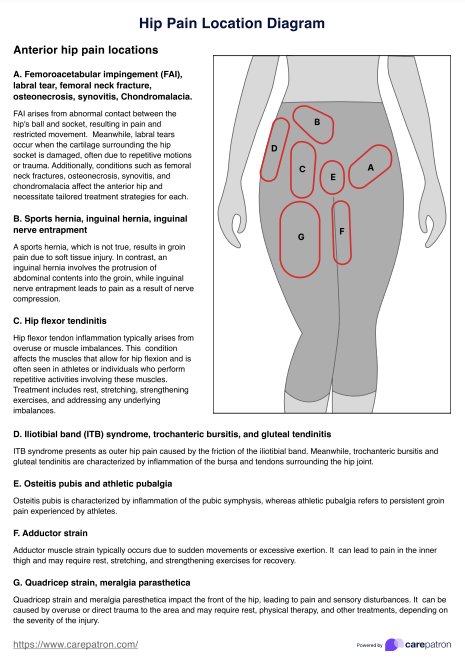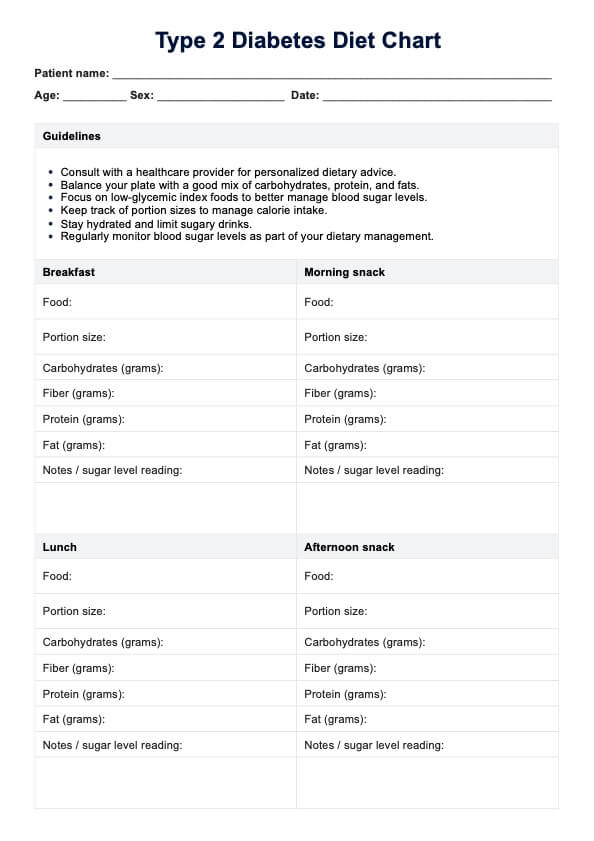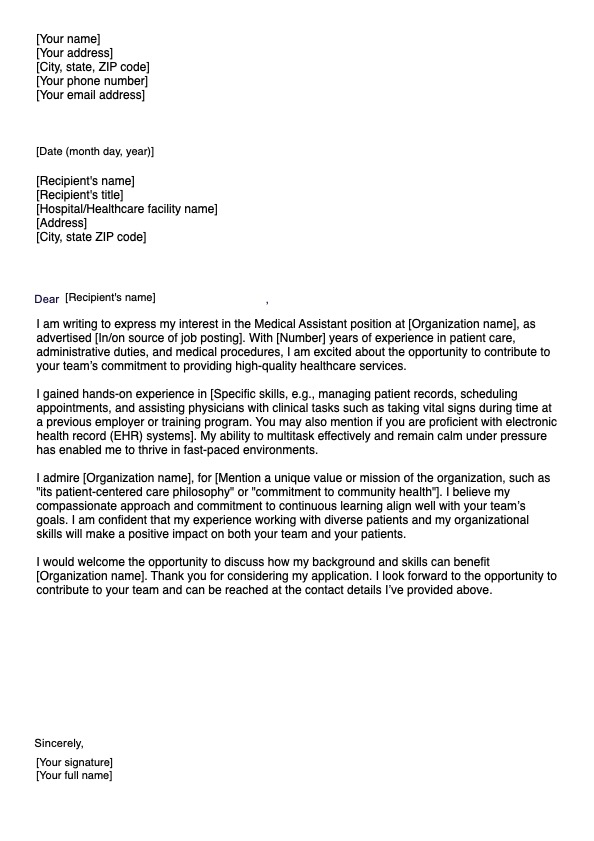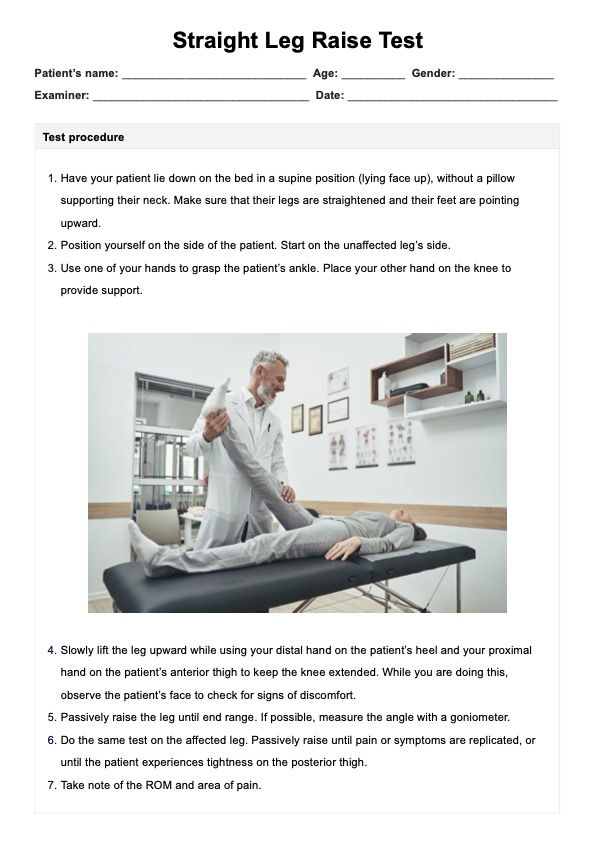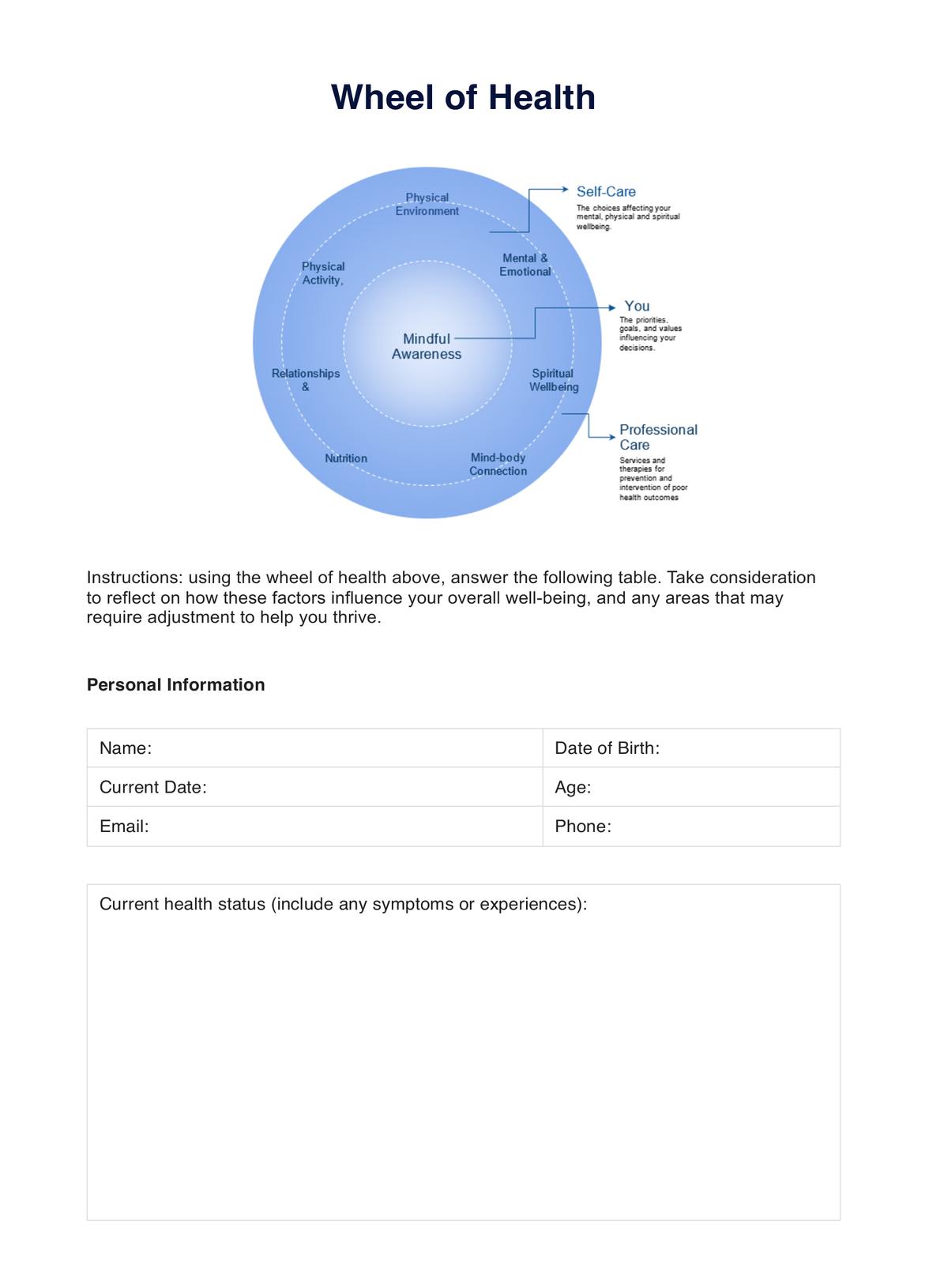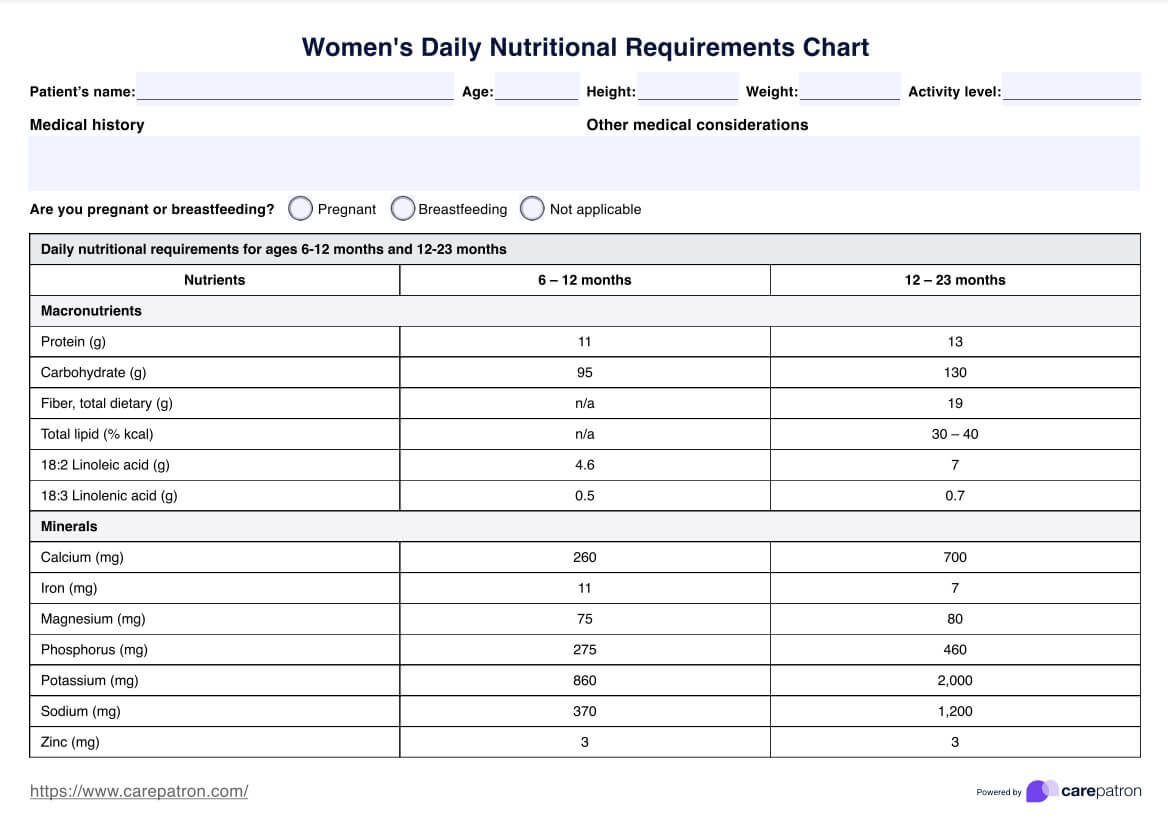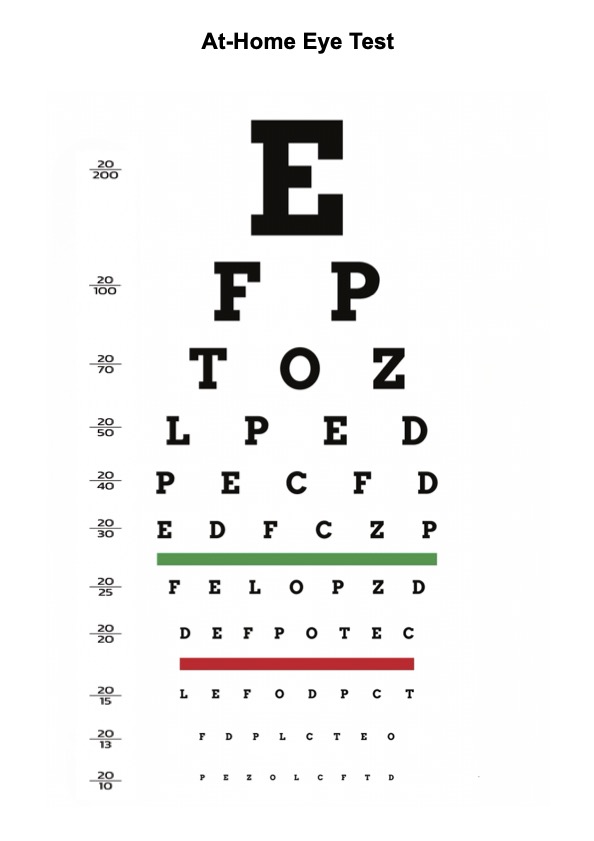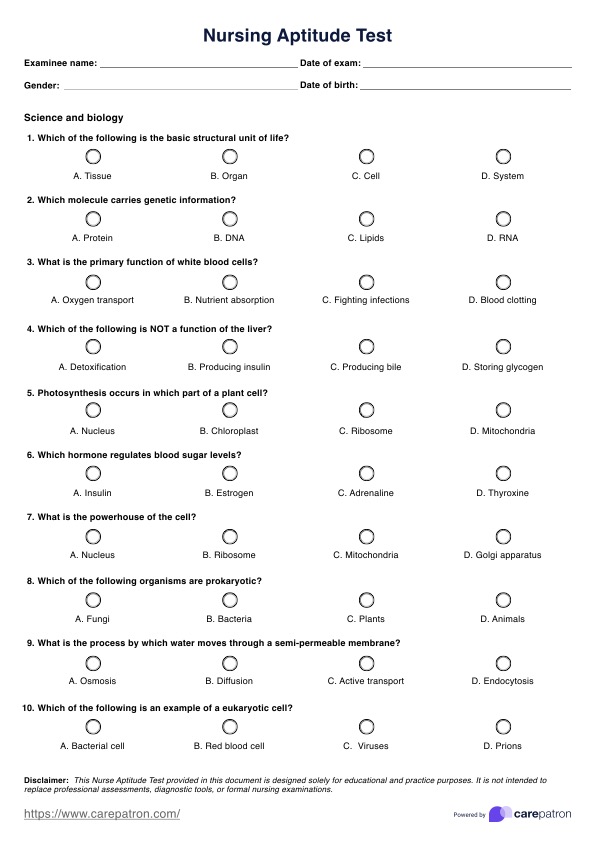Hip Pain Location Diagram
Access a free Hip Pain Location Diagram to quickly evaluate your patients ' hip pain location. Download the free printable PDF here.


An overview of the hip joint and its function
The hip joint is one of the most essential and complex joints in the human body, which is crucial for many movements and functions.
Formed where the thigh bone, or femur, meets the pelvis, it's a ball-and-socket type joint that offers a wide range of motion. The ball is the femoral head—a part of the femur—and the socket is an indentation in the pelvic bone, specifically the acetabulum (Gold, Munjal, & Varacallo, 2023).
This joint is designed to withstand repetitive motion and a fair amount of wear and tear. It's enveloped by muscles and tendons, providing strength and stability to the joint. The hip joint is also surrounded by the synovial membrane, which is rich in blood vessels (Glenister & Sharma, 2023). This enhances the blood flow and nutrition to the joint structures. The membrane's fluid is also needed for smooth movements as it reduces friction among the moving parts of the joint.
Apart from facilitating movement—such as walking, running, and jumping—the hip joint is also vital in maintaining balance. Its strategic location is integral to the body's stability (Glenister & Sharma, 2023).
Hip Pain Location Diagram Template
Hip Pain Location Diagram Example
Using a Hip Pain Location Diagram
Healthcare professionals often use a Hip Pain Location Diagram to help identify their patients' exact source of pain. This diagram outlines the specific areas where pain can occur. The location of hip pain can provide valuable insight into its potential cause:
- Anterior hip pain: This type of pain is localized on the front side of the hip and can result from various conditions, including osteoarthritis, which involves the degeneration of joint cartilage, or a labral tear, where the cartilage around the hip socket is damaged. Front hip pain can also be a result of muscle strains or tears, bursitis, tendinitis, or even referred pain from the lower back.
- Posterior hip pain: Pain in this area occurs on the back side of the hip and can stem from problems related to the lumbar spine, such as herniated discs or sciatica, or deep gluteal syndrome, which affects the muscles and nerves in the hip or buttock area.
- Lateral hip pain: This pain is felt on the side of the hip and can be attributed to conditions like bursitis, an inflammation of the fluid-filled sacs that cushion the hip joint, hip arthritis, characterized by the wear and tear of joint cartilage, or piriformis syndrome, where the piriformis muscle compresses the sciatic nerve.
Carepatron has made a handy hip pain location chart to help healthcare professionals accurately pinpoint the source of their patients' pain. The diagram indicates the possible locations and corresponding conditions that could be causing hip pain.
How does this diagram work?
Our free Hip Pain Location Diagram is free and fully digital. Here's how to use the template:
Step 1: Download the chart
Get a Hip Pain Location Diagram copy using this page's link or the Carepatron app. You can also access it from our resources library.
Step 2: Print or use the digital format
Choose to print the chart or use it in its digital format. Keep a few copies of the hip pain diagram on hand if you work in a busy practice.
Step 3: Use the diagram with patients
When your patient is experiencing hip pain, ask them to show you where they feel pain on the Hip Pain Location Diagram. You can then use this information to narrow down potential causes and provide a more accurate diagnosis.
Step 4: Share with patients
You can also provide your patients with a copy of the Hip Pain Location Diagram to reference at home. This allows them to understand their condition better.
Common causes of hip pain
The hip is prone to various problems and injuries, severely impacting its proper functioning. Hip pain, often due to hip joint dysfunction, can manifest in multiple locations such as the back, front, and side. Here are some common hip pain causes (Hospital for Special Surgery, n.d.):
- Arthritis: The most common cause of hip pain, arthritis is a degenerative condition that affects the joint's cartilage, causing it to wear away and lead to bone-on-bone friction.
- Hip fracture: A severe injury in which one or more bones in the hip joint break. It can be caused by a fall or a direct blow to the hip.
- Bursitis: Inflammation of the bursa, a fluid-filled sac that cushions and lubricates muscles and tendons near joints. This can cause pain in the hip area.
- Stress fracture: A small crack or break in a bone caused by repetitive stress or overuse. It can occur in any part of the hip but is most common in the thigh bone.
- Physical and sports injuries: Sports and other physical activities can lead to various hip injuries, such as muscle strains or tears, ligament sprains, and dislocations.
Treatment options for hip-related pain and conditions
Treatment options for hip pain will vary depending on the underlying cause of the pain and the severity of the condition. Some standard treatment options include (Cleveland Clinic, n.d.):
- Rest: Rest may be enough in minor injuries to allow the affected hip or joint pain to heal independently without further intervention.
- Physical therapy: Physical therapy can help strengthen the hip joint muscles, improving stability and reducing pain.
- Medications: Over-the-counter pain relievers may be recommended for mild to moderate hip pain. In more severe cases causing sharp pain, prescription medications or corticosteroid injections may be necessary.
- Hip surgery: If conservative treatments are ineffective, surgery may be recommended for conditions like rheumatoid arthritis or hip fractures. Hip replacement may also be an option for severe cases of osteoarthritis.
- Other therapies: In some cases, alternative treatments such as acupuncture or massage therapy may relieve hip or buttock pain.
Improving hip health
To help your patients maintain healthy hips and prevent pain or injuries, encourage them to:
- Stay physically active: Regular exercise can help to keep the hip joint strong and flexible.
- Maintain a healthy weight: Excess weight can strain the hips, leading to pain and inflammation.
- Use proper form when exercising: Make sure your patients use adequate form during activities involving the hips, such as running or weightlifting. This can help to prevent injuries.
- Take breaks during prolonged sitting: Sitting for long periods can pressure the hip joint. Encourage your patients to take breaks and stretch their hips regularly if they have a sedentary job.
- Listen to their body: If your patients experience pain or discomfort in their hip area, encourage them to rest and take a break. Continuing to push through pain can lead to further injury.
References
Cleveland Clinic. (n.d.). Hip pain: Causes, common conditions & treatment. https://my.clevelandclinic.org/health/symptoms/21118-hip-pain
Glenister, R., & Sharma, S. (2023, July 24). Anatomy, bony pelvis and lower limb, hip. PubMed; StatPearls Publishing. https://www.ncbi.nlm.nih.gov/books/NBK526019/
Gold, M., Munjal, A., & Varacallo, M. (2019, April 6). Anatomy, bony pelvis and lower limb, hip joint. National Library of Medicine; StatPearls Publishing. https://www.ncbi.nlm.nih.gov/books/NBK470555/
Hospital for Special Surgery. (n.d.). Hip pain causes, conditions and treatments | HSS. Retrieved July 30, 2024, from https://www.hss.edu/condition-list_hip-pain-causes.asp
Commonly asked questions
Hip pain can be attributed to a variety of conditions. The location of the pain can often guide towards its cause. For example, anterior hip pain is commonly associated with joint problems such as arthritis or a labral tear. On the other hand, lateral hip pain can be a sign of conditions such as hip bursitis or deep gluteal syndrome.
Hip fractures refer to a break in the upper thigh bone (femur) near the hip joint. They are often caused by falls, high-impact accidents, or conditions that weaken the bone, like osteoporosis. Hip injuries are a broader category that includes fractures and sprains, dislocations, and strains in the hip area.
Healthcare professionals can use a Hip Pain Location Diagram as a diagnostic tool to identify the specific area of discomfort or pain a patient report. It can also help determine the potential cause of hip pain based on its location within the hip joint and surrounding structures.
Hip pain and groin pain are closely related since the groin is part of the hip joint. However, they can also differ in location and cause. Groin pain usually refers to discomfort in the inner thigh where it meets the torso, while hip pain can occur anywhere around the hip joint. Hip socket injury is a common cause of hip pain and can result in both hip and groin pain.


